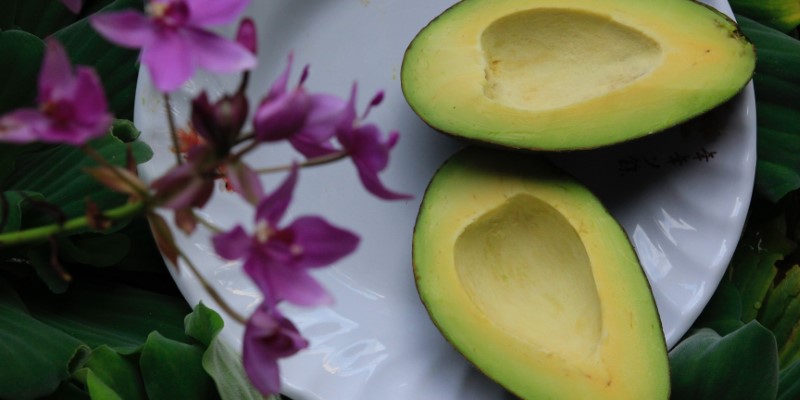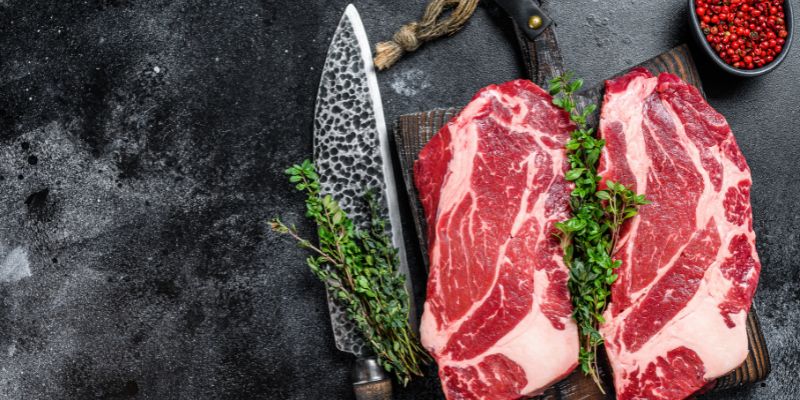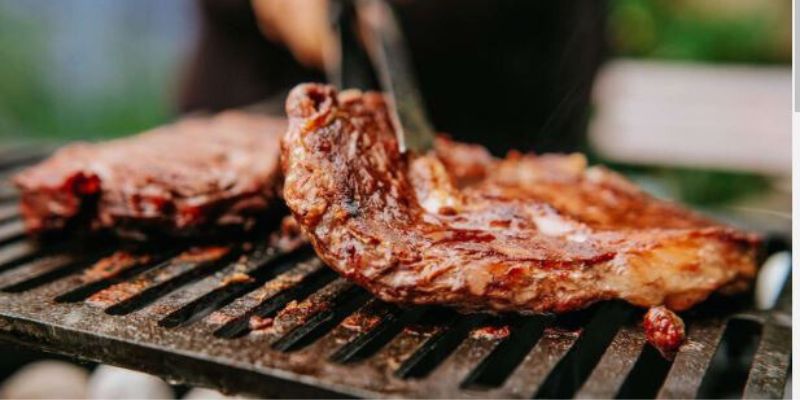Get To Know How to Cut a Brisket: Your Step-By-Step Guide
Sep 04, 2023 By Fabian Forte
Beef brisket is a thick, tough portion of beef that tastes best after being braised or smoked for a long time. When prepared correctly, beef brisket is a versatile piece of soft and tasty meat. You'll need several skills and knowledge to cut a beef brisket.
It is necessary to choose an appropriate brisket for your needs. Considering the size of the beef brisket, you'll want to ensure you have plenty of counter space. The brisket's rough exterior must next be removed. This outermost layer is termed the "deckle" and is not normally consumed.
The flat and the point muscles make up the brisket once the deckle has been removed. The flat is the slimmer of the two muscles, making it the better choice for slicing into brisket sandwiches or using as an entrée.
The fatter tip is ideal for slicing and adding to dishes like chili and stew. After deciding on the perfect brisket cut, the next step is to slice it. Here is a detailed method for slicing brisket.

Knife To Use To Slice Brisket
Any expert butcher or chef should have a brisket-slicing knife in their arsenal. It works great for slicing briskets and other thick chunks of meat. These knives include a long blade (8 to 12 inches long) with a compact, ergonomic grip. Their characteristic construction from high-quality stainless steel ensures they will survive for years without becoming tarnished or rusty.
The best aspect about these knives is that they have been made to cut through meat swiftly and effortlessly, saving you time and effort whether cooking for a crowd or just for yourself. The serrated edge on the rear of the blade makes it simpler to cut through difficult meat without using another knife as a saw.
How To Trim A Brisket: A Step By Step Process
Remove The Extra Fat
If you want your brisket to be tender, juicy, and tasty, you must remove the extra fat before cooking. The first step is to remove any significant chunks of fat protruding from the meat. You only need a sharp knife or some kitchen shears to accomplish this.
If you're concerned about getting rid of every last bit of fat after trimming with your bigger knife, you may go in with a smaller paring knife or boning knife and get rid of any little pockets of fat that may have been missed.
As a next step, cut off excess fat from the brisket until the thickest section of the meat is only an eighth of an inch thick. That way, they won't burn before the meat is cooked all the way through and may cook at the same rate as the rest.
Trim The Ends
Now is the perfect time to get rid of that fat cap. Trim the brisket of fat until you reach the firm fat layer below using a sharp knife. Remove the tip, which is roughly an inch thick, from the brisket. As a result, you'll have an easier time achieving consistent roast thickness.
Splitting the brisket in half ensures that both sides are cooked thoroughly. Use an instant-read thermometer put into the thicker piece's middle to determine when it's done cooking; the meat should achieve a temperature of 165°F after being cooked for 2 hours per pound at 225°F.
Identify The Grain
Finding the grain and slicing with it is another method for slicing smoked brisket. When you slice against the grain, you shred the muscle fibers. Your slices will be tough to chew and will crumble all over your plate as a result.
The first thing is to identify the grain, which may be done by searching for intersecting lines in opposite directions. Like railroad tracks, the lines will look like parallel lines. Different groups of lines throughout the meat's length denote distinct groups of muscle fibers.
When you find these lines, cut along them with your knife and then cut across your incision. Think about sawing through bamboo if you're having trouble envisioning this. The lengthy filaments stand in for muscular fibers. If you cut along these threads, you'll receive many simple pieces to chew and swallow.
Cutting Brisket Carefully
The brisket should be laid flat on a cutting board before slicing it. Make thin slices of beef by slicing against the grain using a knife. Beginning at one end, carefully work your way through the meat slices. This method yields soft and juicy meat, free of tough bits or gristle.
Separating these two pieces of meat involves gently pulling them apart at their natural seam along the fat line, which can easily be done with your hands. Then, holding each side of the meat down with a fork in one hand and the other, you can easily slide your knife blade between the two pieces.

Chopping The Brisket
Brisket cutting shouldn't be more difficult than slicing a loaf of bread, yet it happens. You may also be among the numerous grill masters who save it for a special dish because the point is a fatty part of the brisket. You can always pull out the cleaver and give everything a quick, hard chop, no matter the circumstances.
Whether in a sandwich, taco, bowl of chili, or pie, chopped brisket is a popular BBQ staple. The intense richness of chopped brisket can be balanced by adding an acidic component, such as vinegar, freshly squeezed lime juice, or your preferred BBQ sauce.
Just remember the brisket grain direction to avoid rubbery meat. You want your chopped brisket to have the same texture throughout, but the beef may break apart too much for precise cuts. Cut against the grain at a 90-degree angle to begin with.
Conclusion:
While the actual process of cooking the brisket is an art in itself, the cutting of the meat is just as crucial. If you've spent much time preparing a meal, you shouldn't ruin it by slaughtering it on the chopping board. This guide provides detailed instructions for cooking brisket of all shapes and sizes, including flat, point, and packer cuts. After reading this, you will feel confident making clean cuts every time.
-
 Sep 19, 2023
Sep 19, 2023Avocado - The Origin Story and The Modern Cuisine
Discover the fascinating origin story of avocados and their role in modern cuisine. Explore the rich history and culinary uses of fresh avocados in our article.
-
 Sep 06, 2023
Sep 06, 2023What Is Chuck Eye Steak? Ribeye On A Budget
Chuck eye steak is an affordable, flavorful alternative to premium ribeye that delivers a satisfying, rich taste without breaking the bank.
-
 Sep 04, 2023
Sep 04, 2023Which Are The Best Desserts In Sydney Worth Saving Room For
Almond croissant, Nomtella, Portuguese tart, white coral, baked ricotta cake, and cheesecake are the best desserts you must try if you are in Sydney
-
 Sep 05, 2023
Sep 05, 2023Must See the Factors That Affect Meat Cooking Time
Discover the key factors that affects meat cooking time. From cut to thickness, understand how to achieve perfect doneness every time
